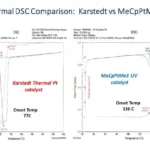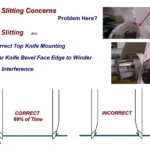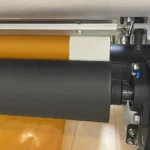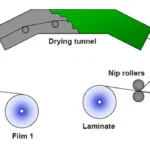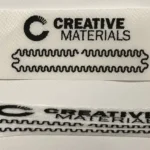By Richard P. Eckberg, Ph.D., chemical and converting industry consultant Editor’s Note: This technical paper originally appeared in UV+EB Technology, 2021 Q3, pages 48-53. Part 1 covered the case for radiation-triggered, addition-cure, silicone-release agents. Introduction Silicone (polydimethylsiloxane) polymers are unique materials that are chemically inert and of … [Read more...] about Photoinitiated addition-cure for silicone-release coatings: Part 2
2022 Quarter 4
The basics of web trim slitting
By Dave Rumson, slitting educator and consultant Editor’s Note: This digital edition now contains a correction on page 76 from the author. We apologize to our readers. Introduction Why do we trim slit webs? To paraphrase the late Professor Erwin Cory, “That is a two-part question. Why? is a question that has plagued mankind since time immemorial.” Secondly, do we trim … [Read more...] about The basics of web trim slitting
Web-handling best practices for corona treating on R2R-converting lines: Why the web path matters
By Tom Gilbertson, vp-Application Engineering – Corona Treating Systems, and Mark Plantier, vp-Marketing & Communications, Enercon Industries Did you know that poor web handling creates trouble for corona surface-treatment operations? It often is the hidden root cause of suspected treatment issues and can lead to significant downtime. As converters run higher line speeds … [Read more...] about Web-handling best practices for corona treating on R2R-converting lines: Why the web path matters
How proper treatment for flexible laminates helps achieve high bond strength, zero optical defects
By Kirsten Lykke, consultant-Polymers & Flexible Packaging Technology for Vetaphone A/S This article discusses the main criteria for high-quality lamination used in today’s flexible-packaging sector and the role that surface treatment plays with sophisticated substrates. Lamination requires two essentials: bond strength and zero visual defects. Fundamental to both is the … [Read more...] about How proper treatment for flexible laminates helps achieve high bond strength, zero optical defects
Thermoforming as a design tool in printed-electronics applications
By Yudhisthira Sahoo, Ph.D., technology specialist; Christopher Kowalczyk, incubator team leader; and Michael Merwin, mgr., Business & Technology Discovery, FLEXcon To date, the benefits of two-dimensional (2D) printed electronics have been widely realized when the printed flat components can be integrated into the target device without many design constraints. However, … [Read more...] about Thermoforming as a design tool in printed-electronics applications


